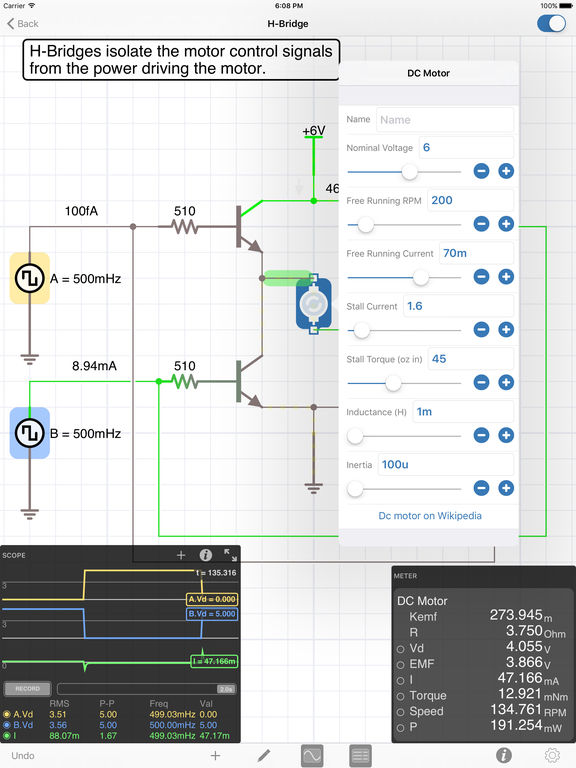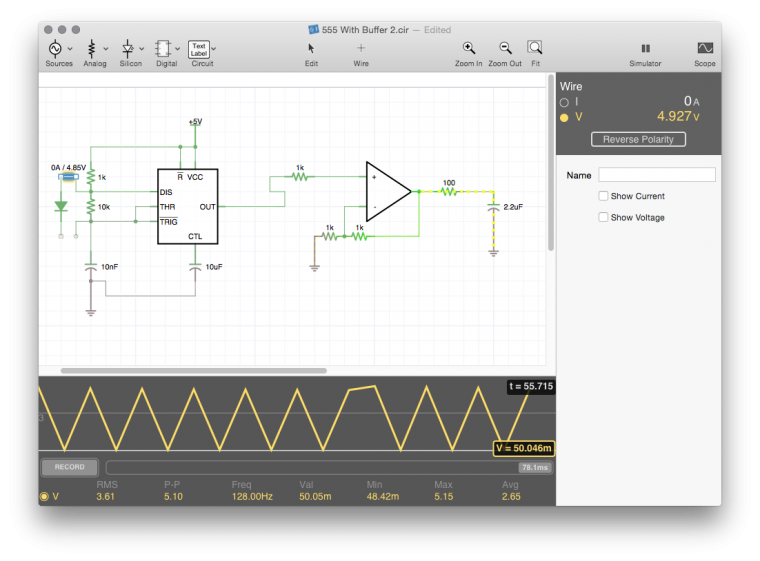

Step 3: Adjust the variable resistor till you get full charge voltage at the output terminal. Step 2: Connect the DC power supply to the input. Step 1: Disconnect the battery to be charged
#LM317 ICIRCUIT PDF#
Download the actual size solder side and component side PCB in PDF format from the link given below.įigure 2: Author Prototype of Charger Circuit Calibration: The solder side, component side, and 3D design are shown in figure 2. PCB of the “lithium-ion battery charger circuit using LM317” is designed using an Altium designer. When the battery voltage becomes equal to the output voltage of the circuit (V0), the current approaches zero, and the voltage becomes constant. While charging the battery with a constant current, the voltage of the battery will increase slowly. Thus, the transistor loop ensures that the charging current will be constant. Transistor does not conduct completely due to shunt voltage because the maximum voltage drop across is not exceeded 0.95V. The role of the shunt resistor is to decide the value of the charging current thus not affecting battery charging voltage. When maximum current ( Imax ) starts to follow through a shunt resistor, the transistor begins to conduct, and as a result voltage at adjustment, pin reduces and makes the output current constant i.e. Initially (when the battery is discharged) the battery will try to draw current as much as it can. This charger circuit works as a constant current source till the battery voltage reaches Vo.

Working of Lithium Ion Battery Charger Circuit Q1 = BC547 (General purpose NPN transistor) U1 = LM317 (Variable positive voltage regulator) The value 0.95 is the voltage drop across the transistor’s base-emitter pin and diode combined.Ĭomponent List of Lithium-ion Battery Charger Circuit Resistor (all ¼-watt, ± 5% Carbon) But the value of the charging current is dependent upon resistor R2 and can be calculated by using a mathematical formula. Thus, the contribution of Iadj in voltage output is negligible. The value of resistor R2 is very small in the range of a few ohms. Where a variable resistor with resistor R1 is responsible for voltage output. An NPN transistor with a diode and shunt resistor (R2) is used here to stabilize the output current. It consists of a variable voltage regulator IC317, a current limiter resistor, a switching transistor, and a few other electronic components. The circuit of lithium-ion battery charger circuit is shown in figure 1. Circuit description of Lithium-Ion Battery Charger Circuit While charging the battery up to 4.1V, its capacity will be reduced by 10% but increase life by twice. So there we adjust the charger circuit to charge the battery up to 4.1V. When we charge the li-ion/lipo battery to 4.2V, its life will be decreased by twice. It is also recommended not to discharge 3.4V. The Single-cell of Li-ion battery is 3.7V. If any of the above conditions match, it might show abnormal charters like exploding, generating fumes, etc. Li-ion or Li-Po batteries are sensitive to overcharge, deep discharge, and high temperature. In constant voltage mode, the battery is charged with constant voltage where the current is charged and approaches zero. In constant current mode, the battery is charged with constant current till the voltage of the battery approaches desired level. constant current mode and constant voltage mode. This circuit charges the battery in two modes i.e. The circuit posted here is designed using one of the famous variable voltage regulators IC LM317. Thus, when designing the charger circuit for Li-ion or Li-Po we have to consider a few things like charging voltage and/or charging current. Lithium polymer or lithium-ion batteries are very much prone to overcharge or charging with high voltage or high current.


 0 kommentar(er)
0 kommentar(er)
